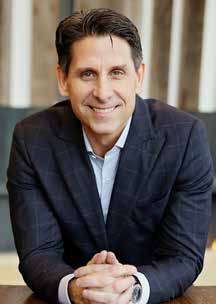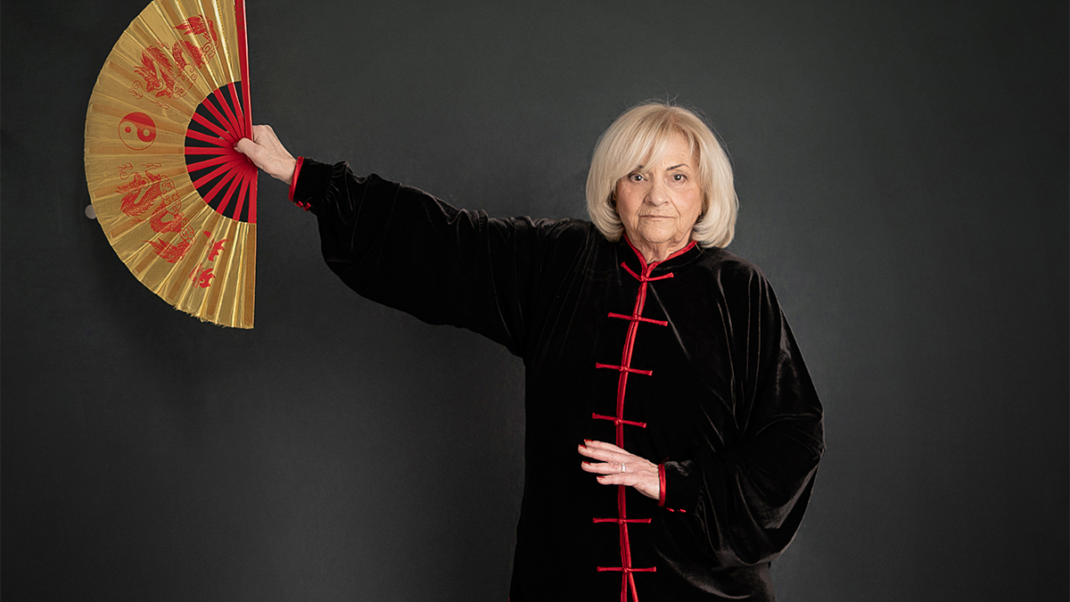The Best of Times Are Yet to Come
Anytime Fitness® CEO Chuck Runyon views "heartpower"—a blend of listening, empathy, motivation and personalized coaching—as key to the industry's success in the next 15 years.

Anytime Fitness CEO Chuck Runyon helped to revolutionize the fitness industry when he and Dave Mortensen co-founded the juggernaut brand in 2002. Now massive in scale and influence, Anytime's success grew by focusing on a model of smaller neighborhood gyms that emphasized convenience, affordability, quality equipment and personable service in friendly, nonintimidating facilities.
Runyon's positive influence has been widely recognized with a stream of accolades: In 2009 he was honored by IHRSA with the John McCarthy Industry Visionary of the Year award. More recently, he received Chief Executive magazine's inaugural Leadership award for his commitment to investing in people and relationships. Specifically noted were Runyon's efforts to help his employees become not merely more productive workers but better people. Under Runyon's leadership, Anytime Fitness itself has earned numerous industry awards, including The #1 Franchise in the World, One of America's Most Promising Companies, The Fastest-Growing Fitness Club in the World, and The Best Place to Work in Minnesota.
ACE: As the obesity epidemic continues to challenge our communities, in what ways do you believe fitness facilities can work to reach out and encourage more individuals to become physically active?
Chuck Runyon: Over the past 15 years, the industry has accumulated impressive amounts of brainpower regarding the science of exercise, has increased the variety of exercise programming available to novices and elite athletes alike, and has developed exciting ways to marry technology and personal wellness. In the next 15 years, we need to accumulate more heartpower—which is a blend of listening, empathy, motivation and personalized coaching—for our members.
We also need to take bigger strides to measure, motivate and monetize the lifestyle activities outside the gym by using digital coaching and aggregating platforms to provide coaching sessions designed for homes and workplaces.
ACE: How have you seen the fitness industry change over the past 30 years? How do you think these changes are moving the health and fitness communities closer to helping people combat obesity?
Chuck Runyon: To paraphrase Charles Dickens, "These are the best of times, these are the worst of times." On one hand, the industry continues to eliminate obstacles by offering low-priced options, convenience, intuitive equipment and specialized programs for people of all ages, shapes, sizes and fitness levels. In addition to commercial gyms, nontraditional sites such as hotels, apartment buildings, employer/school campuses and senior living developments are providing quality fitness options to meet virtually any individual need.
However, the fitness industry's good intentions are frequently trounced by the food and tech industries, which relentlessly cater to those seeking "easier" and more comfortable lives by producing cheaper, good-tasting, high-calorie foods and developing devices and systems that require less physical activity to accomplish even the simplest daily chores. In fact, the Sports & Fitness Industry Association (SFIA) found that in 2014, 27.6% of the population reported "no participation" in 104 different forms of physical activity. And significantly more people report being inactive versus being members of commercial fitness centers. Meanwhile, from your couch you can order food, control lights and adjust room temperature. In addition, with the rising popularity of virtual reality, millions more will soon be experiencing thrills and spills without taking a single step.
ACE: How can fitness facility owners and managers best empower their employees to help customers adhere to regular exercise?
Chuck Runyon: With social media, people are inundated with workouts, diets and unrealistic images. Too much information leaves people feeling frustrated, uncertain or overwhelmed. Now, more than ever, everyone needs a health coach. Good coaches cut through the clutter to personalize and accommodate wellness plans for their clients, including giving advice on nutrition, sleep and physical activity—inside and outside the club. Club owners or managers should empower employees with the right tools, education and financial incentives to drive results. Gym leaders must also establish a culture that prioritizes great customer service above all else.
ACE: What are some ways that you see local and state governments helping communities address the problem of obesity?
Chuck Runyon: Obesity is a complex issue driven by a blend of genetics, environment and lifestyle. Local and state policymakers have the ability to both shape environment and influence lifestyle with legislation designed to accomplish the following:
- Get a focused wellness curriculum back in schools. Owing to budget cuts and concerns about academic performance over the past 20 years, a majority of public schools (elementary and high school) eliminated physical education from the curriculum. Not surprisingly, academic performance dipped—there is an abundance of science to support the link between physical activity, mental acuity and academic performance. And let's not teach the phys ed of the 20th century; let's raise a new generation of kids with a higher body intelligence, so they understand the importance of moving, feeding and resting their bodies.
- Provide financial incentives and reduce red tape for workplace wellness initiatives. Most adults spend half their waking hours at work, and it's an ideal place to influence their health.
- On a federal level, pass the long-overdue PHIT (Personal Health Investment Today) Act, allowing individuals to use their personal Health Savings Accounts to invest in their health.
ACE: What approaches are needed to better connect the fitness and medical communities in order to bring about a more comprehensive approach to combating obesity?
Chuck Runyon: First, let's broaden the focus, because obesity is linked to dozens of serious ailments, such as heart diseases, diabetes, depression, stroke and cancers. In fact, citing 2007 statistics, the World Health Organization projects that obesity will soon surpass smoking and armed conflict as the #1 global killer. In 2013, the American Medical Association classified obesity as a "disease," aiming to improve awareness of the problem while increasing treatment options and funding for medical professionals. Insurance companies are now reimbursing patients for nutritional support and services provided by registered dietitians. The logical next steps are for medical professionals to prescribe regular doses of physical activity—just as they do pills—to improve patients' quality of life and outcomes. Personally, I'm confounded by the dichotomy in the medical industry. On one hand, it has the most brilliant minds working with the most advanced technology to save lives and keep unhealthy people alive longer. Yet, despite the mountains of evidence on prevention and the benefits of healthy lifestyles, the medical industry's views on prescribing exercise are archaic.
Meanwhile, lawmakers are taking a myopic approach to health care and, regardless of your opinion about how to restructure the healthcare system, the costs will continue to rise given the care needed for an aging and unhealthy baby boomer generation. In the midst of all of this, we need a long-term vision and solutions to address future generations, steering them to better health with investments and policies focused on prevention and improved health. The only sure bet to improve the healthcare system is to improve the health of the country.
Editor’s note: Bridging the Gap is a series of interviews conducted by ACE with professionals throughout the fitness and allied health industries, as well as our partners in the corporate world. ACE hopes this column will start a conversation among those entities about the impact of the obesity epidemic and how we can all work together to eliminate it by 2035.





